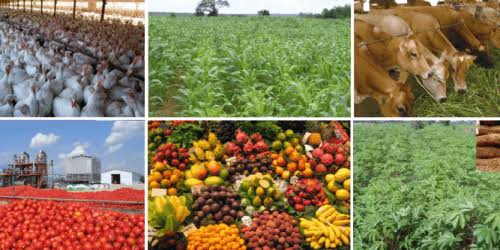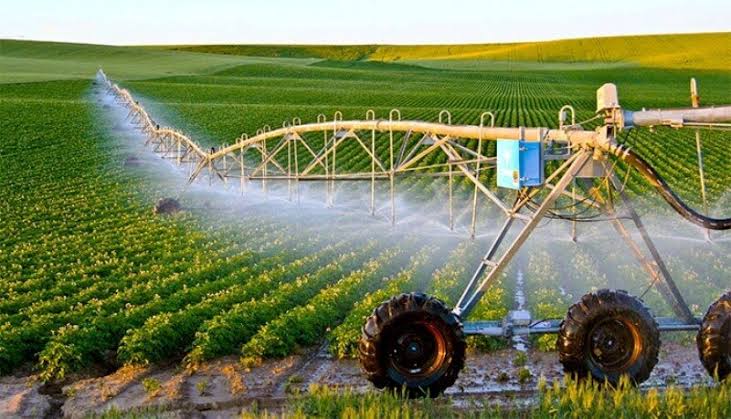Agricultural production plays a vital role in sustaining global food security and meeting the nutritional needs of a growing population. This multifaceted process involves the cultivation of crops and the raising of livestock for human consumption and various other purposes.
In essence, agricultural production encompasses the entire journey from seed to harvest. Farmers diligently prepare the soil, select appropriate seeds, and engage in planting activities to initiate the growth of diverse crops.
The cultivation methods vary across regions, influenced by climate, soil conditions, and available resources. From traditional practices to modern, technology-driven approaches, farmers employ a range of techniques to optimize yields.
The choice of crops depends on factors such as climate suitability, market demand, and the nutritional value of the produce. Staple crops like rice, wheat, and maize form the backbone of many agricultural systems, providing essential sustenance to a significant portion of the global population. Additionally, fruits and vegetables contribute crucial vitamins and minerals to our diets, supporting overall health and well-being.
Livestock farming complements crop cultivation, contributing meat, dairy, and other products. Cattle, poultry, and sheep are among the commonly raised animals. Livestock farming involves careful management of animal health, nutrition, and breeding to ensure a sustainable supply of high-quality products.
Technological advancements have revolutionized agricultural production, introducing precision farming, smart irrigation, and genetically modified crops. These innovations aim to enhance efficiency, reduce environmental impact, and address challenges such as climate change and resource scarcity.
However, agricultural production is not without its challenges. Farmers face uncertainties related to weather conditions, pest infestations, and market fluctuations. Sustainable practices and responsible resource management have gained prominence as the agricultural sector grapples with the need to balance productivity with environmental conservation.
Moreover, the global interconnectedness of food systems underscores the importance of international collaboration and trade. Countries with diverse climates and agricultural capabilities often engage in the exchange of agricultural products, contributing to a more resilient and stable global food supply.
Agricultural production is a complex and dynamic process that sustains life on our planet. From the careful cultivation of crops to the management of livestock, farmers play a crucial role in providing the world with the sustenance it needs. Embracing innovation while prioritizing sustainability is key to ensuring that agricultural production can meet the challenges of the future and continue to nourish communities worldwide.
Read Also: Everything You Need to Know About Citrus Fruits
Advantages of Agricultural Production

The advantages of agricultural production are manifold, encompassing economic, social, and environmental aspects. Firstly, it serves as the backbone of many economies, providing livelihoods for a significant portion of the global population. Farmers and agricultural workers contribute to economic development by producing food and raw materials, fostering rural employment, and supporting related industries.
Agricultural production also plays a pivotal role in ensuring food security. The cultivation of a diverse range of crops and the rearing of livestock contribute to a stable and reliable food supply. This is essential for meeting the nutritional needs of a growing population, reducing the risk of hunger and malnutrition.
Furthermore, agriculture serves as a source of income diversification for rural communities. Beyond primary production, there are various opportunities along the agricultural value chain, including processing, distribution, and marketing. This diversification helps create resilient communities and reduces dependency on a single source of income.
From a social perspective, agriculture often forms the cultural and historical identity of communities. Traditional farming practices and indigenous knowledge are passed down through generations, fostering a connection to the land and a sense of heritage. Additionally, agriculture can play a role in community cohesion, as farmers collaborate on shared resources and engage in collective activities.
Environmental benefits are also associated with sustainable agricultural practices. Conservation tillage, agroforestry, and organic farming methods contribute to soil health and reduce erosion. Practices like crop rotation and cover cropping help maintain biodiversity and minimize the need for chemical inputs. Sustainable agriculture is crucial for preserving ecosystems and mitigating the impact of farming on the environment.
Moreover, agricultural landscapes provide essential ecosystem services, such as water purification, carbon sequestration, and habitat for wildlife. Well-managed agricultural systems can contribute to overall environmental sustainability, supporting biodiversity and maintaining the balance of natural ecosystems.
The advantages of agricultural production extend beyond mere food provision. They encompass economic development, food security, cultural heritage, community resilience, and environmental sustainability. Recognizing and harnessing these advantages is essential for creating a balanced and resilient global food system.
Economic Impact of Agricultural Production
The economic impact of agricultural production is profound and multi-faceted, influencing global, national, and local economies in several ways.
1. Employment and Livelihoods: Agricultural production is a major source of employment worldwide. It provides livelihoods for a substantial portion of the global population, particularly in developing countries. Farmers, farmworkers, and those involved in related industries, such as food processing and distribution, contribute significantly to economic activity.
2. Contribution to GDP: Agriculture is a significant contributor to the Gross Domestic Product (GDP) of many countries. The output generated by agricultural activities, including the value of crops, livestock, and associated products, forms a substantial part of the overall economic output.
3. Trade and Export: Agricultural production plays a crucial role in international trade. Many countries rely on the export of agricultural commodities to generate foreign exchange and support their economies. The global agricultural trade network facilitates the exchange of diverse products, ranging from grains and fruits to meat and dairy.
4. Input Industries: The agricultural sector drives demand for various input industries. This includes the production and sale of agricultural machinery, seeds, fertilizers, pesticides, and other inputs. The growth of these industries further stimulates economic activity.
5. Rural Development: Agricultural production often serves as the backbone of rural economies. It influences the development of infrastructure, including roads and irrigation systems, in rural areas. Successful agricultural enterprises contribute to the overall prosperity of rural communities.
6. Food Processing and Value Addition: Beyond primary production, the agricultural sector encompasses food processing and value addition. This adds value to raw agricultural products and creates opportunities for agribusinesses. Processed foods, beverages, and other value-added products contribute significantly to the economy.
7. Economic Stability: The stability of the agricultural sector can have broader economic implications. Crop failures or disruptions in agricultural production can lead to food shortages, inflation, and economic instability. Governments often implement policies to support and stabilize the agricultural sector to ensure overall economic resilience.
8. Innovation and Technology: Investments in agricultural research and technology contribute to economic growth. Innovations in farming practices, machinery, and biotechnology enhance productivity and efficiency, fostering economic development within the agricultural sector.
In addition, the economic impact of agricultural production extends far beyond the fields. It encompasses employment, GDP contribution, international trade, rural development, and the interconnected web of industries that support and rely on agriculture. Recognizing the economic significance of agriculture is crucial for informed policymaking and sustainable economic development.
Read Also: Complete List of Fruits, their Nutritional Values, Benefits and Importance
Uses of Agricultural Production

The uses of agricultural production are diverse and extend beyond providing food. Here are several key uses:
1. Food Supply: The primary and fundamental use of agricultural production is to supply food for human consumption. Crops such as grains, fruits, vegetables, and livestock products like meat and dairy are essential components of the human diet.
2. Livestock and Fiber Production: Agricultural activities involve the rearing of livestock for various purposes, including meat, milk, wool, and leather. Livestock farming contributes not only to the food supply but also to the textile and fashion industries.
3. Raw Materials for Industries: Agricultural products serve as raw materials for various industries. Crops like cotton and flax provide fibers for textiles. Additionally, biofuels are derived from certain crops, contributing to the energy sector.
4. Medicinal Plants: Many plants cultivated in agriculture have medicinal properties. Herbal remedies and pharmaceuticals often rely on plant-based ingredients, emphasizing the connection between agriculture and healthcare.
5. Biomass for Energy: Agricultural residues, such as crop residues and organic waste, can be used as biomass for energy production. Biomass energy can be harnessed through processes like biofuel production and biomass power generation.
6. Landscaping and Ornamental Plants: Agriculture involves the cultivation of ornamental plants and landscaping vegetation. Flowers, ornamental trees, and shrubs contribute to beautifying urban and rural landscapes.
7. Research and Development: Agricultural production supports research and development activities in various fields. Scientists study crops and livestock to improve yields, develop disease-resistant varieties, and enhance agricultural sustainability.
8. Economic Development: Agriculture contributes significantly to the economy by providing employment opportunities, supporting rural development, and contributing to a country’s Gross Domestic Product (GDP). It is a key driver of economic growth in many nations.
9. Export and Trade: Agricultural products are frequently traded internationally, contributing to global commerce. Countries often engage in the export of surplus agricultural goods, fostering economic relationships and supporting their balance of trade.
10. Environmental Services: Agricultural landscapes provide essential environmental services, including carbon sequestration, water purification, and habitat for biodiversity. Sustainable agricultural practices can contribute to environmental conservation.
In summary, agricultural production serves as the foundation for numerous human activities, ranging from basic sustenance to industrial processes. The diverse uses of agriculture highlight its integral role in meeting various societal needs and fostering economic, environmental, and social well-being.
Read Also: DIY Solar Panels: Harnessing Sunshine for a Brighter Tomorrow

